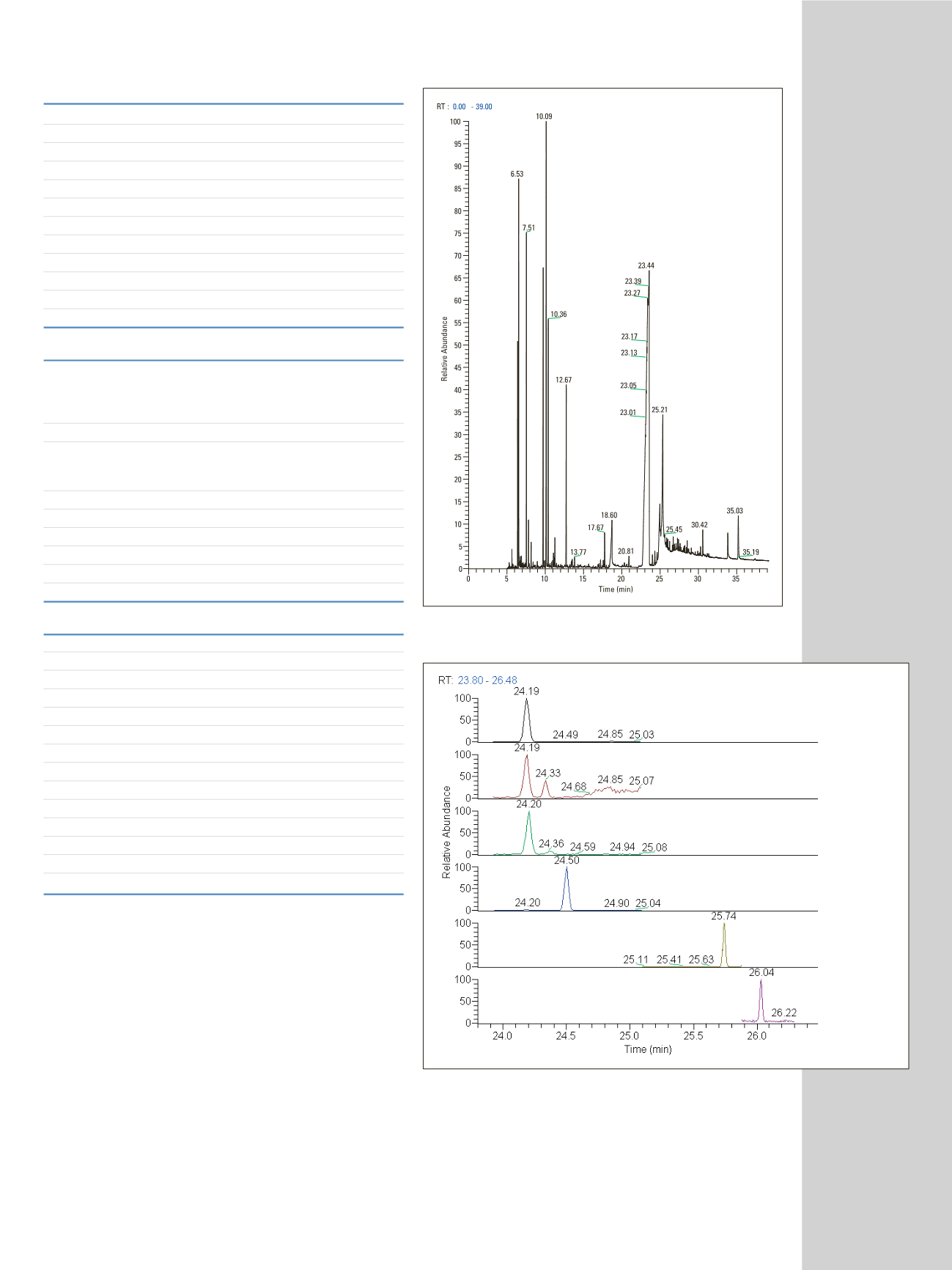
Page 5 of 8
AS 3000 II Autosampler
Sample Volume
2 µL
Plunger Strokes
5
Viscous Sample
No
Sampling Depth in Vial
Bottom
Injection Depth
Standard
Pre-inject Dwell Time
0
Post-inject Dwell Time
0
Pre-inject Solvent Wash Vial Position A + B
Pre-inject Solvent Wash Cycles
3
Sample Rinses
3
Post-inject Solvent
A
Post-inject Solvent Cycles
3
FOCUS
™
GC
Column
TRACE TR-Pesticide III
35% diphenyl/65% dimethyl
polysiloxane, 0.2 5 mm x 30 m x
0.25 µm w/ 5 m guard column
Column Constant Flow
1 mL/min
Oven Program
40 °C, 1.5 min, 25 °C/min; 150 °C,
0.0 min, 5 °C/min; 200 °C, 7.5 min,
25 °C/min; 290 °C, 12 min
S/SL Temperature
250 °C
S/SL Mode
Splitless with Surge Pressure
Surge Pressure
250 kPa
Inject Time
0.5 min
Split Flow
50 mL/min
Transferline Temperature
290 °C
ITQ Mass Spectrometer
Damping Gas Flow
2
Source Temperature
250 °C
Ion Volume
EI
Emission Current
250 µA
Detector Gain
3 (1421 V)
Lens 1
-25V
Lens 3
-25V
Gate Lens On
-100
Gate Lens Off
100
Electron Lens On
15V
Electron Lens Off
85
Electron Energy
-70 eV
Trap Offset
-10
Waveforms
Off
Table 2: Selected instrument parameters for the ITQ 700 GC-ion trap MS
Figure 4: Full scan chromatogram of 600 ng/g pesticide spike in tea matrix
Figure 5: MS/MS scan of 600 ng/g pesticides in tea matrix, highlighting the
elution range of 24 to 26 minutes
Chlorpyrifos
Malathion
Carbaryl
Parathion
Trans-Chlordane
Terbufos


